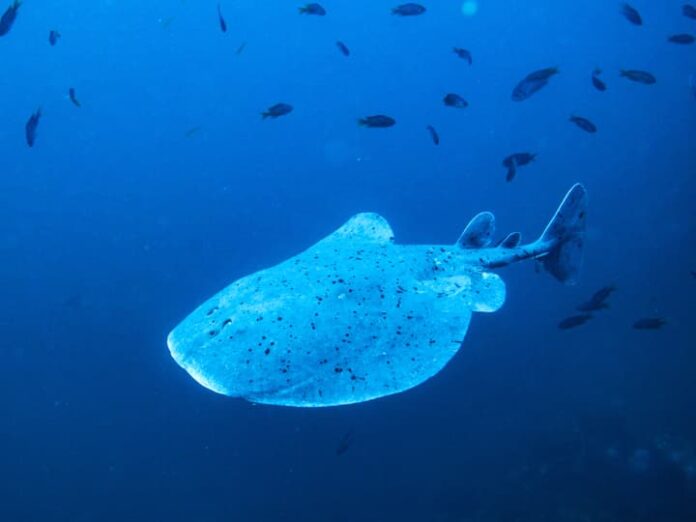Electric rays and electric eels are some of the fish that are capable of producing an electric discharge. The eels have had such a reputation for a long time already, but knowing that electric rays also exist is very fascinating. In fact, there are over 60 species of them out there swimming around and hunting smaller fish by shocking them. You will find 8 most common electric rays below, this is going to be interesting.
1Atlantic Torpedo
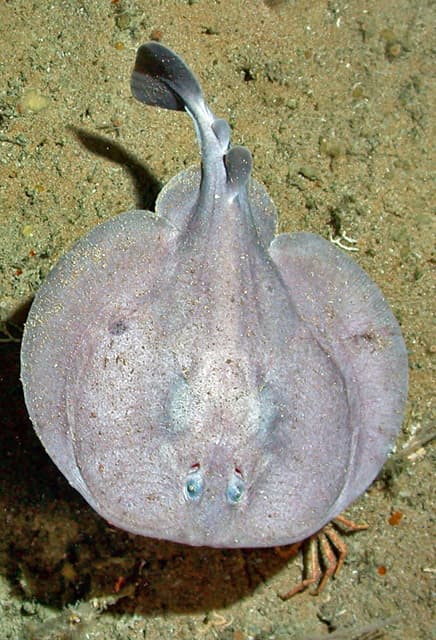
Scientific Name: Tetronarce Nobiliana
Here we have an electric ray species that can reach a length of 1.8 meters, making it the largest electric ray. It has an almost circular pectoral fin disc, with a large triangular caudal fin and robust tail. This ray has a dark surface while the underside is white in color, and dark spots and white spots may be present. Being the largest electric rays, these ones can generate up to 220 volts of electricity. Thanks to the pair of kidney-shaped electric organs in its disc, the discharge from the organs can cause some damage. This is more than enough to stun any predators and prey in its way, and knock a human unconscious. The combination of its size and super awesome ability makes it rarely fall prey to other animals.
Atlantic rays have a wide range in cool waters on both sides of the Atlantic Ocean. Juveniles are benthic bottom-dwellers, living at depths of 10 to 50 meters over muddy or sandy flats, or near coral reefs. As they mature, they come closer to the open ocean, swimming at a depth of 200 to 500 meters. These rays are solitary, and they often hide during the day and come out to eat at night. They feed on bony fishes like eels, flounders, mullet, and salmon, as well as crustaceans and small sharks. When prey passes by, it traps the prey against its body by curling its pectoral fin disc around it. At the same time, it delivers strong electric shocks to subdue its prey before feeding on it.
2Blind Electric Ray
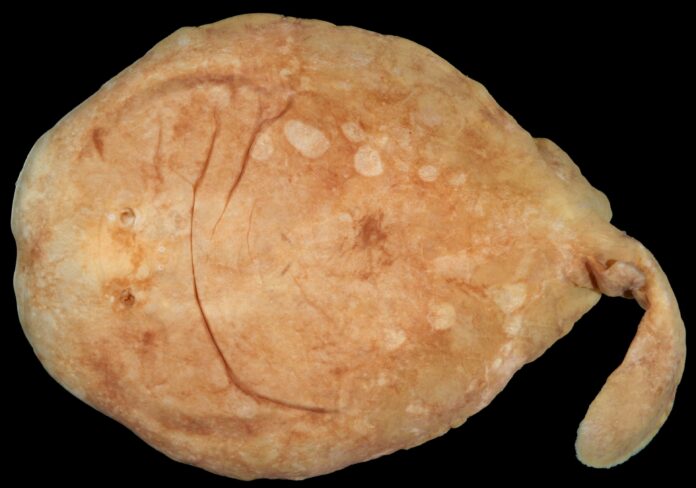
Scientific Name: Typhlonarke Aysoni
A blind electric ray is a medium-sized ray that grows to a size of 38 centimeters. It has a thin and nearly circular pectoral fin disc with two pelvic fins, and a short tail. Living deep in the sea, its color is not so bright; a blind electric ray is brown above and beige below. This ray is not a good swimmer, and it moves by pushing itself using its pelvic fins. The name can be confusing, as this electric ray is not blind at all. It is just that its eyes are so tiny that they don’t appear visible externally. The best part about this electric ray is a pair of kidney-shaped electric organs that is beside its head. These organs allow it to generate an electric shock that the fish use for defense.
The blind electric ray is a member of the sleeper ray, and it is endemic to New Zealand. Its range is from the East Cape of the North Island all the way to the Snares Shelf south of the South Island. This ray lives at a depth of 300 to 400 meters in the ocean. Where it lives, it feeds on polychaete worms aka bristle worms. Living at that depth is still not safe as these electric eels are caught in bottom trawls. Simply put, commercial fisheries are one of the main threats to this species, though the data on its population is deficient.
3Coffin Ray
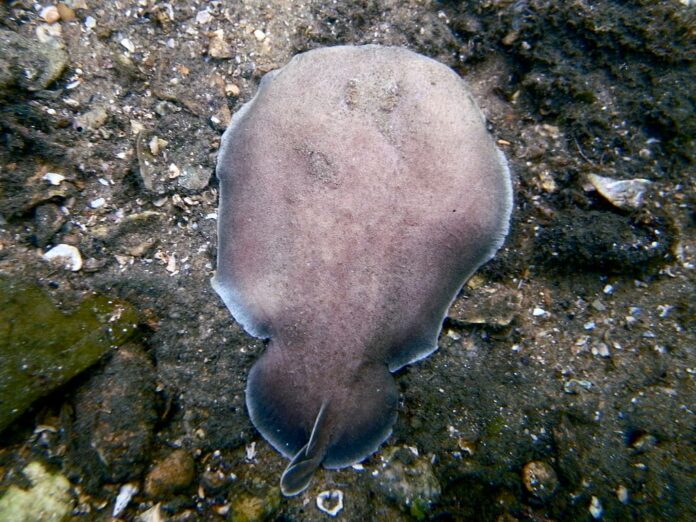
Scientific Name: Hypnos Monopterygius
The coffin ray or Australian numbfish is one of the common electric rays among the family. Rather small, a coffin ray only grows to around 40 centimeters in length, but larger ones are also present. It has an interesting appearance, with its enlarged pectoral fins and super short tail. Coffin ray has a flabby body, and its electric organs are visible on both sides of its head. This ray has different shades of brown on the surface, and a lighter color on the underside. Just like many ray species, it has tiny eyes. However, don’t let this small size fool you because it can produce a shocking amount of electricity, up to 200 volts. This is for attack and defense, and it has enough power to shock a human, and you won’t like that.
This species is endemic to Australia, hanging out in inshore waters that are shallower than 80 meters. Being sluggish, these electric rays occur in muddy or sandy habitats where they can bury themselves during the daytime. As the night approaches, it comes to feed on benthic bony fishes and invertebrates it can find. Its diet commonly consists of benthic bony fishes, cephalopods, crustaceans, and polychaete worms. It is very common to see them around bays, beaches, estuaries, over seagrasses, and around coral reefs and rocky reefs. This is it is also very common for bathers, divers, and swimmers to get electrocuted by these rays. Though not fatal, the shock is strong enough to numb a person for several minutes. It is called numbfish for a reason.
4Finless Sleeper Ray
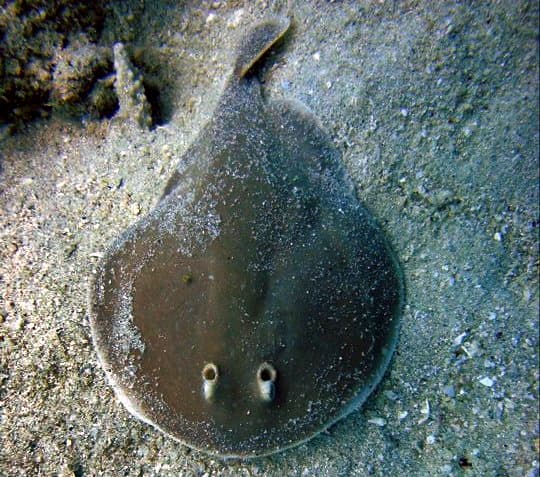
Scientific Name: Temera Hardwickii
This is probably the smallest electric ray in the world, growing to only around 8 centimeters, and never exceeding 15 centimeters. A finless sleeper ray has small bulging eyes, along with electric organs visible on either side of its head. Despite their size, these cartilaginous fish can still generate electricity to stun their prey. The finless sleeper rays are found in the coastal waters of Southeast Asian, from the eastern Andaman Sea to Vietnam and Borneo. Across their range, they feed on small invertebrates they catch by using their superpower. As for this electric ray species, it is listed as Vulnerable on the IUCN Red List. It is a slow-reproducing species, and they are caught by intensive bottom trawl and other fisheries throughout their range.
5Lesser Electric Ray
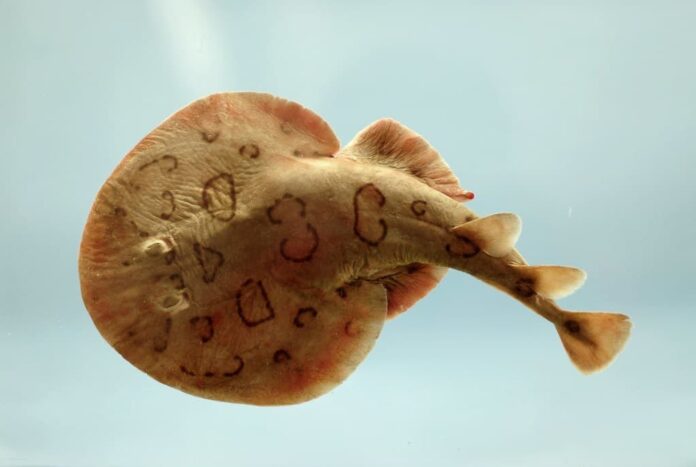
Scientific Name: Narcine Bancroftii
The lesser electric rays have a near-circular body that is usually 45 centimeters long, with a short and thick tail. Its body is dark brown to reddish-orange in color, along with dark, irregular, or oval spots on it. The electric organs of this species run from the front of its eyes all the way to the rear end of the disc. However, it can only produce around 14 to 37 volts of electricity, just enough to attack prey and defend itself.
These electric rays roam the western coastal fringes of the Atlantic Ocean and Caribbean Sea. As a slow-moving fish, it usually dwells on muddy and sandy beaches, and swims among the seagrass beds. Not different from many rays out there, the lesser electric rays forage for food at night. They mainly feed on polychaete annelids, but they also eat benthic worms, crustaceans, juvenile snake eels, sea anemones, and small bony fish. The lesser electric rays are considered Critically Endangered on the IUCN Red List due to habitat loss and overfishing (accidental and targeted).
6Marbled Electric Ray
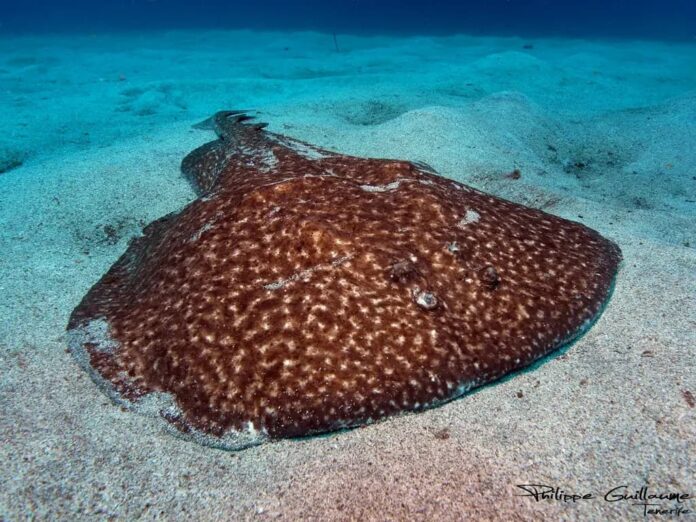
Scientific Name: Torpedo Marmorata
Rather a brighter one amongst other electric rays on the list, this one is dark brown in color with yellowish spots. A marbled electric ray can reach the length of up to 1 meter long, and females are larger than males. What’s super cool about these electric rays is the way they protect themselves against predators. A marbled electric ray will swim in a loop or curl up with its underside facing outward. This allows it to emit electric shocks and electrocute predators upon contact with from 80 up to 200 volts of electricity.
Marbled electric rays also have two methods when it comes to shocking the prey. The first one is “jumping”, and the ray uses it to attack prey fish that swim close to its head. When jumping, the ray pulls back its head and thrusts its disc upwards whilst making a single tail stroke. All of these are done while the ray produces a high voltage of electricity to stun the fish. As for the second method, it is called “creeping,” which is the hunting tactic for slow-moving prey. It simply means the ray pursues the prey before opening its mouth to suck the meal in. The electricity is not necessary in this method, but the ray will electrocute the prey if it moves or resists.
Living in the Eastern Atlantic Ocean, its range stretches from the North Sea to South Africa. As a benthic fish, it lives in rocky reefs, sandy and muddy flats, and seagrass beds where it buries itself. This is to hide itself from predators and prey, making it easy to ambush its meals. Marbled electric rays feed on small bony fishes by shocking them. Their diet consists of benthic bony fishes such as conger eels, goatfish, gobies, mullets, sea basses, and wrasses. This species is now Vulnerable on the IUCN Red List due to accidental bycatch.
7Onefin Electric Ray
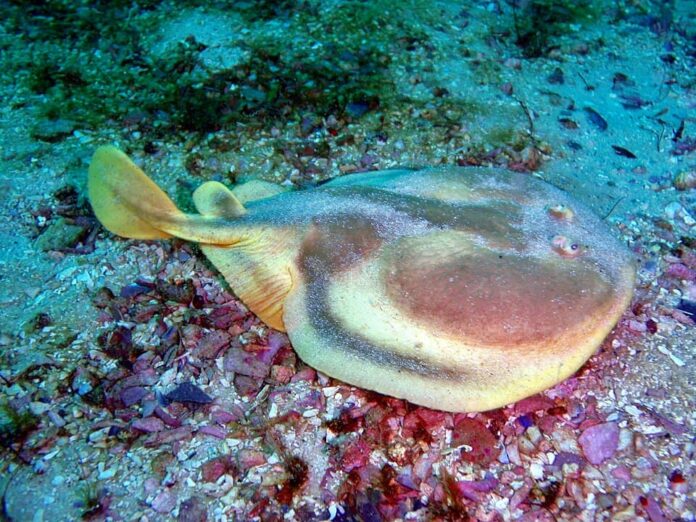
Scientific Name: Narke Capensis
Very common but not known by many, the onefin electric ray is one of a kind. It is only around 38 centimeters long, and its distinctive appearance is the large caudal fin supported by its muscular tail. This tail also supports the ray in propelling itself. The disc of this ray is wider than most rays, and its dorsal is yellowish to dusky brown in color. The electric organs are beside its head, and they allow these electric rays to generate up to 230 volts. This electric shock is so powerful that it can stun its predators, which are the broadnose sevengill sharks. An electrocution from one can be painful for humans, but not fatal.
It is native to South Africa and Namibia, where it lives in shallow coastal bays over muddy or sandy bottoms. Onefin electric rays feed on crustaceans, polychaete worms, and other benthic invertebrates they can find. Similar to many ray species out there, this one is also frequently caught as bycatch in bottom trawls. Along with that, water pollution from coastal development also affects their population as well. The good thing is that humans don’t eat them, and they often discard these rays due to the powerful shock when handled.
8Pacific Electric Ray
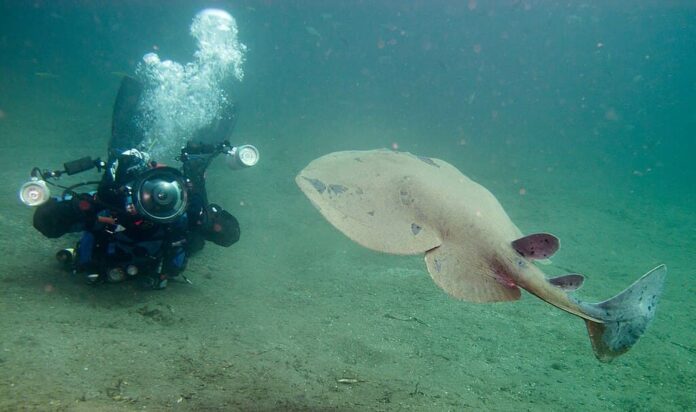
Scientific Name: Torpedo Californica
A Pacific electric ray is a beautiful ray species that grows to about 1.4 meters long. Its dorsal coloration is dark gray to bluish-brown above and pale white below, and some individuals have dark spots all over. The older the ray is, the more darker spots it has on its body. As for the electric organs, they are visible on the sides of the ray’s head. Its ability to shock is fairly strong, and it can generate up to 45 volts of electricity, 200 volts in some cases. The fascinating bit is that it produces two types of electrical pulses: an intense burst and a steady pulse. The steady pulse is to warn predators when it is being chased while the latter is to incapacitate the prey.
As for this one, it is endemic to the Pacific Ocean, from Baja California all the way to British Columbia. Across its range, it inhabits kelp forests, rocky reefs, and sandy flats as well as the open ocean. This electric ray feeds on bony fishes like anchovies, herrings, and mackerels, and it either ambushes them or hunts them. Some other meals on the sides are cephalopods and invertebrates, if there are any. Due to their electric capability and size, they have very few predators, and those are sharks and other carnivorous fish. Though steady, the population of these electric rays is threatened by bycatch, climate change, habitat degradation, and human disturbance.
Related Post: Biggest Rays & Stingrays

